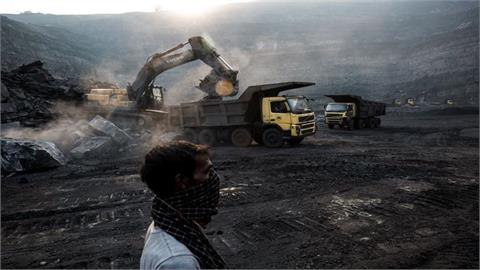The energy sectors of all countries are facing a great challenge, a transition amid continuous reduction in CO2 emissions, which is a challenge with no historical precedence and which involves all participants in the technological chain of energy
The energy sectors of all countries are facing a great challenge, a transition amid continuous reduction in CO2 emissions, which is a challenge with no historical precedence and which involves all participants in the technological chain of energy management, all citizens, and all economic entities. At the end of energy transition (the year 2050 is being mentioned in the EU), the production and transformation of energy, as well as its transport and transmission, distribution, and consumption, will be performed with new technologies and amid new economic relations. All changes will take place within a living system, where not all processes will go in the same direction, which makes process management particularly important.
The energy transition involves continuous improvements in energy efficiency, the development of a quality market for energy, a continuous increase in the use of renewable energy sources, improved energy management, continuous technological progress, and continuous improvements in citizens’ and the economy’s education and awareness of examples of good practices.
1. Energy efficiency
Energy efficiency is the first component of energy transition, whose aim is to reduce the need for energy in order to cut down on production and, consequently, CO2 emissions. It covers the entire chain of production, transport / transmission, distribution, and consumption, and involves a continuous process that will combine various measures – from investment to new technologies to management, and all solutions in energy management digitalization.
Available measures are determined by the character of the place of consumption and the consumer. Most buildings built before 1990 will require a major overhaul in terms of energy efficiency, as well as insulation. Those built after 1990 will require partial overhaul, while high energy efficiency in new buildings can be achieved through legally prescribed construction standards.
It is to be expected that the current practice of pulling inefficient technologies from the market will be continued. This is an effective measure that can be implemented properly.
One of the greatest challenges is how to increase energy efficiency in transportation. Automobiles are expensive, and they are about 14 years old on average, with high levels of fuel consumption compared to the latest generations. It is unlikely that the replacement of old automobiles with electric cars will take place in a single transition. It is rather more realistic to expect a reduction in the consumption of oil products first, through replacement of old cars with new automobiles with more efficient internal combustion engines, and then their replacement with electric cars or the use of other new technologies.
2. Energy market development
The energy market is the key infrastructure on which all energy and climate policies should be based. In the pre-transition period, the energy market was under great pressure from incentives for renewable energy sources, while at the same time the emissions market did not take hold, so there was no economic differentiation between the technologies for the production of electricity from natural gas and coal. The mandatory off-take of electricity produced from renewable energy sources, on the one hand, and the unfunctional emissions trading system on the other, had led to electricity prices declining to below market levels. This, in turn, resulted in closures of a number of gas-fired thermal power plants and increased electricity production at coal-fired thermal power plants, which was not in line with the climate policy.
The pre-transition experience showed that energy and climate policy measures must not undermine the energy market, but rather that all price incentives should be avoided and all energy transactions performed through energy exchanges. Incentives, if they are necessary, should be directed towards supporting investments, such as those in segments of bioeconomy, in order to achieve circular resource management.
3. Renewable energy sources
In the pre-transition period, renewable energy sources had achieved intense technological development in terms of unit size, efficiency and prices in the wind segment and in terms of efficiency and prices in the solar segment. These two technologies, along with hydropower plants, are the foundation of the future of energy.
The largest amount of fumbling was seen in the bio-sector. At the very beginning of the pre-transition period, the bio-sector was the solution to everything that was missing in the future development. The first generation of biofuels was a complete failure, however, both in terms of energy and strategically. The energy needed for the production of first-generation biofuels was almost equal to the amount of energy needed to produce that energy. Moreover, due to high incentives, it competed with the food industry for the same agricultural land, which demotivated food producers.
The concept of building biomass-fired thermal power plants was also disoriented, until high standards of the efficiency and long-term sustainability of biomass were set. Biogas-fired power plants began as standalone energy projects, but later their long-term sustainability was put into question. According to the latest concepts, energy production represents added value to the overall bioeconomy cycle, and energy is primarily produced for self-consumption.
Geothermal energy, for its part, is a source that requires significant investment in research, which discourages investors from the start. There is potential, but tapping it will depend on policy measures.
4. Energy management
The term energy management is wider than the term energy efficiency – it includes energy efficiency, and refers to the management of energy costs by each participant in the technological chain, from production to transport and transmission, to distribution and consumption, using digital technologies and all options that will be available on the energy market, including own production. Major technological changes are expected in the management segment– from the development of the necessary infrastructure to the development of a regulatory and economic system that will self-generate market players’ interest to achieve the most favorable results for themselves.
The key infrastructural requirement for making a breakthrough in energy management is the establishment of smart metering and the implementation of a smart grid and smart energy consumption project.
5. Technological progress
In the pre-transition period, a significant technological progress was made, particularly in the use of renewable energy sources. There are great expectations for the upcoming period in terms of increasing efficiency and reducing prices. An increased use of renewable energy sources creates two main problems: balancing the system and substituting production when there is no production from renewable sources or when such production is minimal. Both problems have a common denominator: the availability of backup capacities that can balance or substitute production from renewable sources.
The solution in the future will include:
Power grids of neighboring countries that have such backup capacities available at a given time
Own hydropower plants or pump-storage hydropower plants
Gas-fired thermal power plants
Energy storage facilities
Gas-fired power plants using synthetic methane
Gas-fired power plants with carbon capture and storage technology
Use of batteries in electric cars or for household and business use
Technological progress is expected in all aspects – from energy digitalization to energy storage. A particularly important aspect of technological progress refers to technologies that can extend the lifespan of technologies used with natural gas, whether through the production of synthetic methane or the use of natural gas with carbon capture and storage.
6. Education and awareness
The expected changes in the energy sector, as a consequence of climate and energy policies, call for changes in the education system. The "new” energy will in all its aspects differ significantly from "today’s” energy and, in order to achieve this, it is necessary to reform the education system.
The concept of new energy will eliminate the boundary between the formal energy sector and consumers, since energy production will take place at the consumer level. Moreover, the digitalization of energy will create much greater possibilities for the management of energy production and consumption and enable more citizens/consumers to opt for own energy production.
(read full article: https://balkangreenenergynews.com/energy-transition-a-challenge-with-no-historical-precedence-part-one/ )




